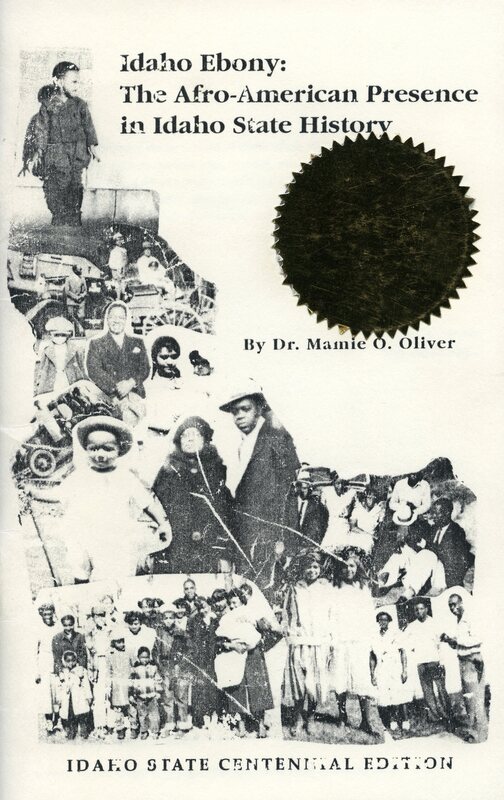This week’s edition of Diverse Collections features Idaho Ebony: The African American Presence in Idaho State History by Dr. Mamie O. Oliver.1 In the Introduction, Dr. Oliver writes,
“When the phrase ‘Idaho history’ is mentioned, the average Idaho native is apt to think of the original Native American settlers - the Nez Perce, the Coeur d’Alene, the Shoshone, and the Palouse - who came face to face with the immigrants from Europe hailing from virtually every corner of the continent. Searching his memory further, the Idahoan may recollect the wave of Chinese immigrants who came to build the railroads in the late 19th century. Many returned to their home country, but some stayed on, often in the face of considerable adversity, to build their own special place in Idaho life. But to talk of African American history in Idaho may seem as strange to a Gem State native as finding a grove of ebony trees amid Idaho’s apple orchards and white pine. The African American presence in Idaho started small - just 60 “free colored” men and women were recorded by the territorial census in 1870. And it grew only slowly: 201 persons of ‘African descent’ were counted in 1890; 651 in 1910; 1,050 in 1950. By 1980 there were 2,711 African Americans (1,686 men, 1,025 women) living in Idaho. In 2000 there were only 5,456 African Americans in all of Idaho, constituting a small minority in a total state population of more than a million persons.”2
Dr. Oliver’s research “draws on census data, newspaper articles, letters, and personal conversations, as well as published works of local and regional history. It describes the role African Americans have played in the life and history of that land known for the past hundred plus years as the state of Idaho.”3
You can read Dr. Oliver’s work here! You can also contact us about Special Collections’ holdings of Dr. Oliver’s research.
Sources
Day-NW E185.93.I15 O45 1990
-
For more information about Dr. Oliver, see Blacks in Idaho’s White Press, 1863-1916 ↩
-
The Journal of African American History Vol. 91, No. 1, The African American Experience in the Western States (Winter, 2006), pp. 41. ↩
-
The Journal of African American History Vol. 91, No. 1, The African American Experience in the Western States (Winter, 2006), pp. 41. ↩


